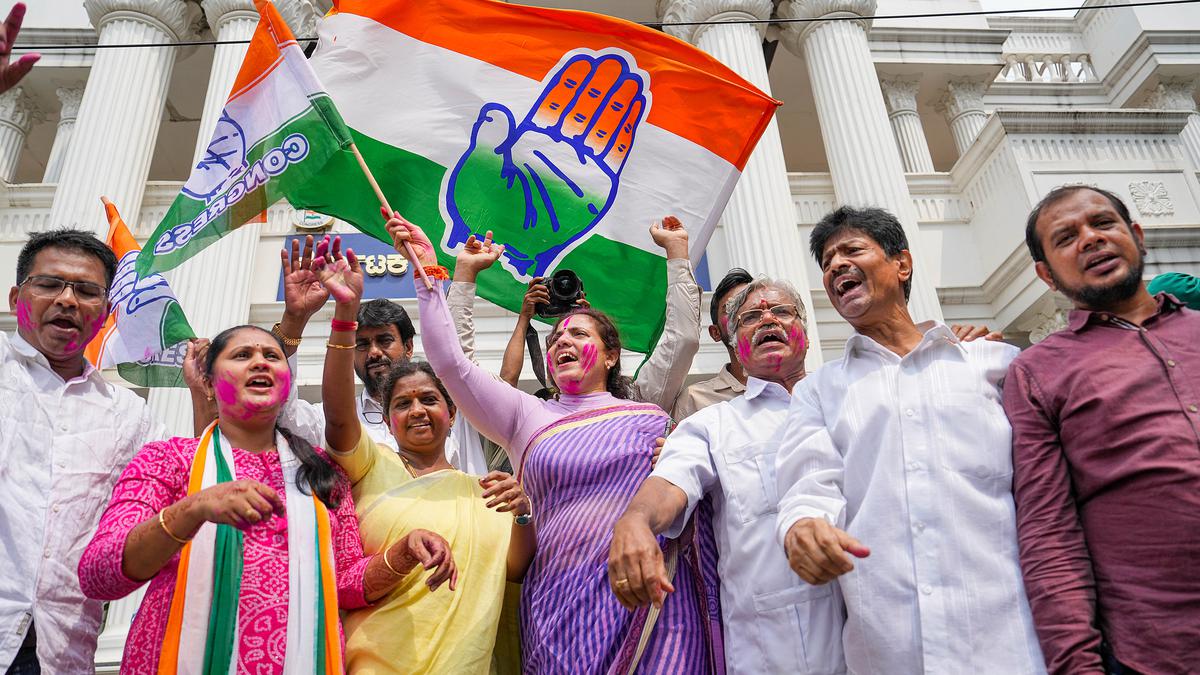
It was a rare sight to see when news channels with flashy graphics and loud background music with their anchors who are all used to speaking rapidly and repeatedly about the usual BJP victories had to suddenly change their news flash to accommodate a result that showed Congress in the lead. This is not to say that political pundits didn’t have their finger on the pulse, it is only to indicate that the country at large has gotten used to a certain kind of election result and a victory by the Congress took some living room discussions across India by surprise.
While the initial surprise has worn out, it does require a closer look at the political and voter dynamics in the state to study the campaign strategy by Congress and the BJP and analyse the factors that have influenced voting in the state. If one were to quietly reflect on Karnataka, the first thing that jumps out is that since 1985, that means in the past 38 years Karnataka has never voted an incumbent government to power. The Kannada voters have stuck to their pattern of anti-incumbency this time as well, which should have been taken into consideration.
The social stratification of the Kannada society has also played a role in the election results. The biggest community in the state is that of the Lingayats who constitute 17% of the population and are geographically distributed in such a way that they decide about 90 out of a total of 224 seats of the state. The Lingayats also happen to be a traditional voter base for BJP and in the past have been responsible for putting BJP in power in the state.
However, during the campaign for the recent elections, prominent Lingayat leaders like the former Chief Minister B.S. Yedurappa and Jagdish Shettar, as well as former Deputy Chief Minister Laxman Savadi were cast aside by the BJP which was neither received well by these senior leaders and seasoned politicians nor by the people of the community. The statistics show that BJP couldn’t capitalise on their traditional voter base as they fielded 69 Lingayat candidates and only 15 could secure victory, whereas Congress secured 37 out of 46 seats that were fought upon by a Lingayat candidate. Congress also managed to capitalise on the swing Lingayat vote wherever possible in the state.
The second largest community is that of the Vokalligas which constitutes about 15% of the population and are responsible for 70 out of 224 seats in the state. They are concentrated in the south of Karnataka and are traditionally associated with the Janta Dal Secular voter base. The Vokalligas usually swing between JDS and Congress. Congress played to the Vokalliga voter base by declaring that they put their trust in D. Shivkumar, a seasoned politician from the community to lead the Congress campaign. This declaration coupled with benefits announced for the community as well as speculation about D. Shivkumar becoming the next CM of the state definitely helped the Congress secure the Vokalliga vote. This was also bolstered by JDS’ inability to serve the community when they had come into power for a year in 2018. Congress managed to convert this into a win even in old Mysuru which is traditionally a JDS bastion.
It is also important to note that Congress did manage to consolidate its traditional vote bank and make a dent in the Opposition’s base. The traditional voter base for BJP is Lingayats, Nayaks, Smaller OBCs, Edigas, Billavas, and some Dalit communities. The traditional voter base for the Congress is Ahindas or OBC, Minorities, and Dalits.
The steadfastness of Congress in Karnataka to their own narrative as well as data-driven policies helped the party secure this victory. They also managed to secure and put up a united front for leadership. Mallikarjun Kharge played a key role in uniting D. Shivkumar and Siddaramaiah, both of whom were crucial for this victory. The clear communication of the narrative as well as the policy promises like Gruha Lakshmi, Yuva Nidhi as well as capitalising on issues of corruption within the BJP, unemployment, the Nandini Milk incident all helped the Congress emerge as an effective alternative to the previous regime. It is possibly a welcome change for the state of Karnataka and now the country would watch if the Congress could replicate this victory in other states.


Anshumaan Mishra and Dr Aparaajita Pandey are independent political analysts.